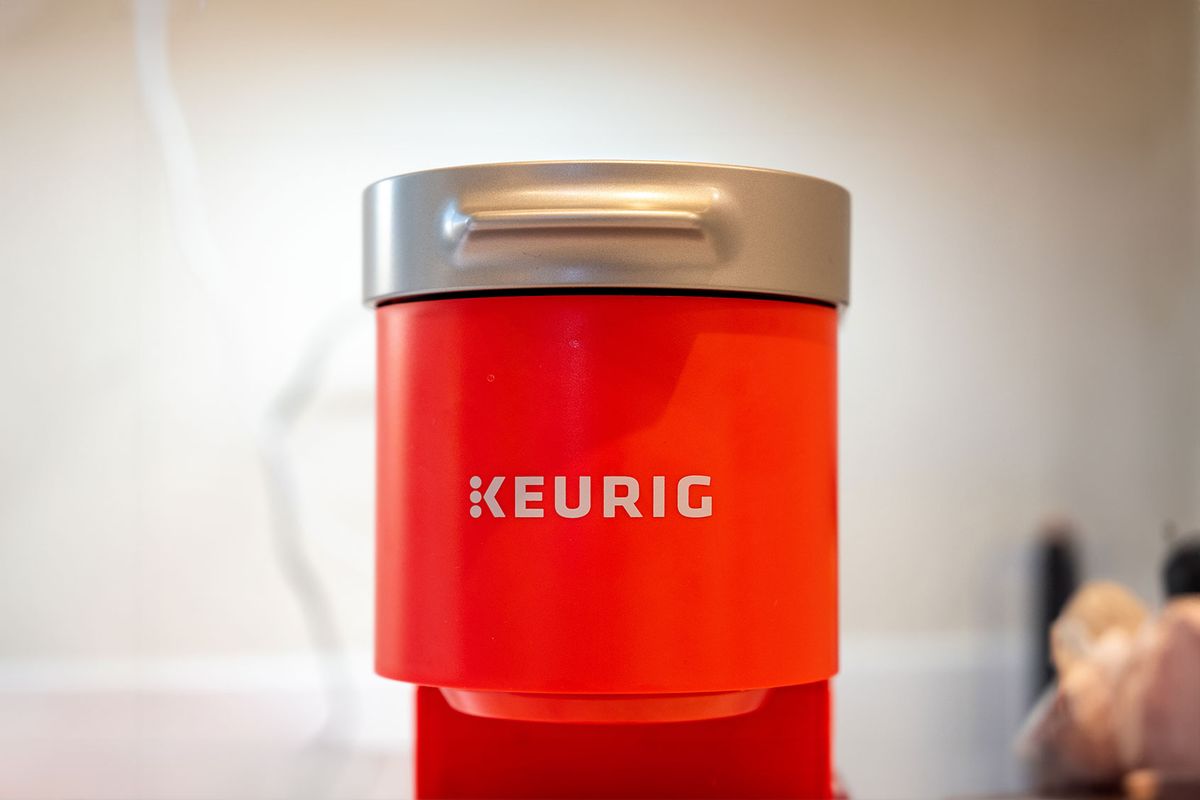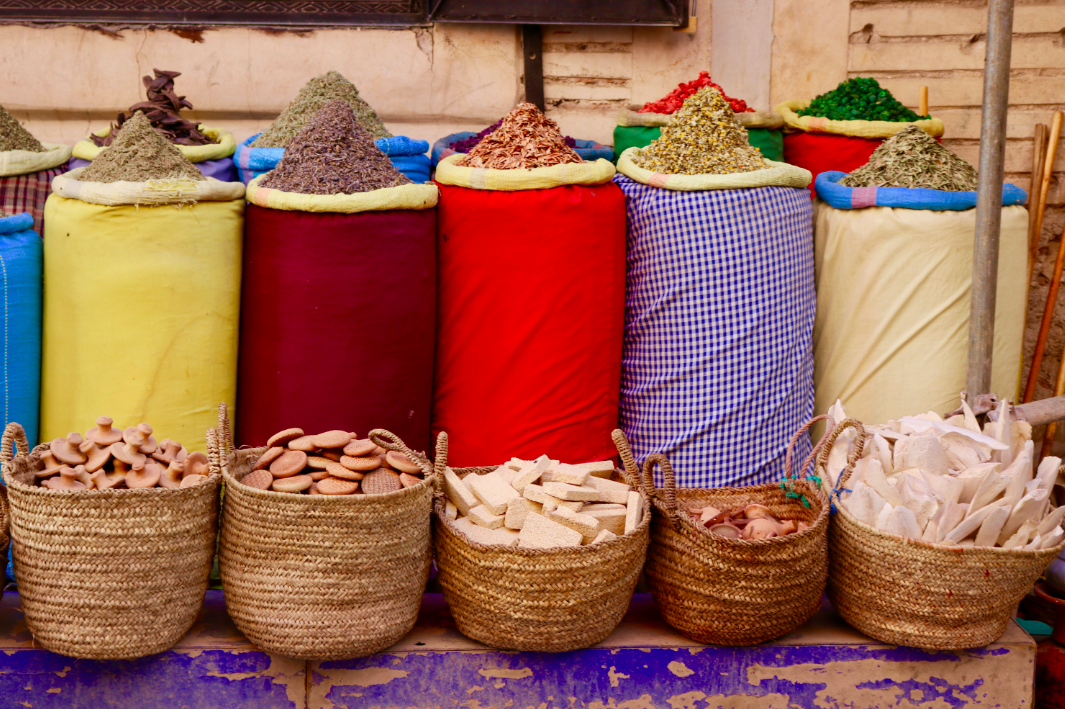Colourful, vibrant and mystical, the very word Marrakech conjures up images of a flaming desert city; an exotic place of sensory overload with alluring sights, sounds, and flavours. One of Morocco’s oldest and most captivating cities, the former Imperial metropolis is today a major economic hub that has successfully maintained its Old-World charm.
Fondly referred to as the ‘pink or red city’ due to its buildings – old and new – that have been constructed using red earth found in the surrounding hills. The shade of pink is somehow never too light or too solid, rather soft when the sun doesn’t shine, and invitingly warm in direct sunlight.
At the heart of Marrakech is the walled medieval medina that dates back to the Berber Empire. Allow yourself to get lost in its maze-like alleys with its heady aromas and many market stores. Here you will find amazing deals on finely-crafted leather sandals and bags plus brightly-coloured baskets, spices, brass-ware and glassware. Remember to brush up on your bargaining techniques. Shop for handwoven rugs, painted ceramic bowls, stained glass lamps, envy-inducing tiles and ‘Fatima Hands’ in every shade of good luck.
Savour the sounds of traditional drums on the Jemaa el-Fnaa Square and hear the muezzin’s call to prayer at the many mosques. Watch skilled craftsmen at work in the Souks and take a guide to introduce to you the school, mosque, bakery and fountains of the inner medina communities. A journey into the city takes you back in time as you scout its numerous alleys, always guided by the ochre red walls that will lead you home.
Visit ‘La Maison de la Photographie’ House of Photography in Jamaa Lfna, a fascinating archive of photographs of Morocco taken by anonymous travellers and famous photographers between 1870 and 1960. The House of Photography opened in 2009 and offers charming insight into the evolution of the ochre city, going up to the roof is a must.
Walk the Avenue Mohammed V, Marrakech’s high street, with its luxury stores, hotels and restaurants. Enjoy endless cups of sweet mint tea and pause for a refreshing freshly squeezed orange juice from one of the many vendors.
A symbol of the city is the Moorish minaret of the 12th-century Koutoubia Mosque. Easily visible given a local ordinance that forbids any other building in the Medina to be taller than a palm tree, leaving the Koutoubia Mosque towering over the city. Know that non-muslims may not enter the mosque, however, you are welcome to walk around the exterior and enjoy the Koutoubia gardens.
Possibly one of the most visited sites in the city and the place to fall in love with true Majorelle blue is the Jardin Marjorelle. A two-and-a-half-acre artist’s landscape garden in Marrakech that was created by the French Orientalist artist, Jacques Majorelle over a period of forty years. Acquired by him in 1923, it features a Cubist villa that was designed by the French architect, Paul Sinoir in the 1930s.
Yves Saint Laurent and Pierre Bergé went on to buy the Jardin Majorelle in 1980, saving it from falling victim to a real estate project and becoming a hotel complex. They decided to live in the Villa Bou Saf Saf, which they renamed Villa Oasis, and undertook the restoration of the garden in order to ‘make the Jardin Majorelle become the most beautiful garden – by respecting the vision of Jacques Majorelle.’
I’d been there on a previous visit, but June is low season in Morocco and there were far fewer people this time, allowing us to appreciate the colours and ‘Marjorelle blue’ so perfectly depicted here. The Berber Museum – or the museum of the Amazigh people as they call themselves – respects the intriguing nomadic tribe and is a must. As is the Love Museum, with the posters to love painted my YSL each year.
Next door is the Musée Yves Saint Laurent Marrakech, which houses many of Saint Laurent’s designs, accessories, sketches and a collection of photos taken during his long and inspired career, as well as his connection with this city he loved – as much as I do.
Enjoy the sunset from a Marrakech rooftop overlooking Djem al Fnaa Square. These rooftop bars serve mocktails and mint tea, moreish mezze platters and delicious tajine dishes. On the outskirts of the city, marked by the outline of the Atlas Mountains, discover Berber villages, occasional street art and numerous ways to relax into an otherwise busy day.
A city of romance, mysticism, theatricals and royalty, Marrakesh lends a rose-tinted view to the world and is the ideal destination for adventure seekers and those looking to leave behind their reality and escape to the delight that is this seductive city.


Jardin Marjorelle in shades of blue and green.

Koutoubia Mosque, the tallest structure in the old city.


These large wall murals, mostly faded by time and passing trade, can be spotted in the heart of Marrakesh’s medina while walking through the various artisan focussed quarters. They represent the (mostly) central African refugees that have come to call Morocco – and specifically this part of Marrakech – home.
The Mandarin Oriental, Marrakech
I spent four nights at the Mandarin Oriental, Marrakech in a pool villa which was so spacious and beyond beautiful. Arriving to perfect weather and an afternoon swim in the 10m long private and heated pool – something that would become a daily ritual – during my stay, I enjoyed an Argan Oil Moroccan massage at The Spa, more meals and mint tea than I’m ready to admit to, the impeccable and gracious service of everybody I encountered during my stay, exploration of the 20ha grounds by bicycle and the constant company of birdsong.
The courtyard has day beds, loungers, a jacuzzi and a hammam as part of the Moroccan-themed luxury. The gardens are home to mature trees and cascading white bougainvillaea, manicured lawns and rose gardens with a farm and vegetable patch on the property that the Chefs cycle to and harvest from each day.
From the Garden Terrace and restaurant where I had my daily helping of irresistible gazpacho and mezze platter, there was a mesmerising view across the pools and teal blue infinity water features. I’ve truly been spoilt in my day, but this is likely the most luxurious and special place I’ve ever had the pleasure of settling into for a few days. It’s such a hard place to leave and why if you can, I recommend it as the perfect place for an indulgent Marrakech breakaway.

Kasbah Tamadot by Sir Richard Branson
Taking a drive out of the city, we enjoyed lunch at Sir Richard Branson’s Kasbah Tamadot, a scenic drive away in the spectacular Atlas Mountains, the property was bought into the Virgin fold during one of Branson’s famous ballooning expeditions. Sitting overlooking the ochre orange hills and with a Berber village across the valley.
I opted for a fresh Moroccan Salad and a Vegetarian Tagine dish accompanied by a glass (or two) of Les Deux Domaines Eclipse Rose, locally produced, a cup of spicy black coffee and a big bowl of freshly picked cherries. Everything and more than I could ask for.
The Hotel itself has 28 rooms and suites that have been individually decorated to reflect the distinct architecture of the area and is home to antiques from all over the world. The service is notably brilliant.



More of Magical Morocco
One of North Africa’s most popular destinations and famous for its bustling cities, incredible history and pristine desert landscapes, there is something in Morocco for everybody with its four imperial cities namely Marrakesh, Fes, Meknes, and Rabat, the country’s capital. Although a modern city, Rabat has several interesting historical attractions such as the Kasbah of the Udayas, the Hassan Tower and gleaming Royal Mausoleum.
Casablanca boasts The Hassan II Mosque, the largest mosque in Africa and the 5th largest in the world, which can accommodate as many as 25 000 people. A visit to the port city would not be complete without a meal at Rick’s Café, made famous by the classic namesake film starring Humphrey Bogart and Ingrid Bergman.
Morocco’s Atlas Mountains beckon escape and discovery with their ancient Berber villages and popular walking routes, while the vast and arid Sahara Desert, the world’s largest hot desert can be accessed from several places in Morocco. For the beach lover, Morocco borders both the Mediterranean Sea and the Atlantic Ocean, with Tangier and Agadir as popular coastal destinations, and smaller Essaouira and Taghazout drawing avid surfers each year.
Chefchaouen in northwest Morocco is arguably the most photographed place in the Kingdom, known for the striking, blue-washed buildings of its old town where leather and weaving workshops line its steep cobbled lanes.
Read my article: Meet me in Morocco. A dizzying road trip through an ancient land.

Ancient unchanged lands, on the drive into the Agafay Desert.
The Essential Details for booking your visit to Marrakech
Getting there: The Marrakech Menara Airport services a multitude of airlines. From South Africa consider an easy connection via Europe, or a stopover in Casablanca, which is serviced by Qatar Airlines, SAA and Emirates. Internally Royal Air Maroc, the National carrier, is an excellent option. Accommodation: Rivalling for the top spot are the Mandarin Oriental, Marrakech (where I stayed) and Hotel La Mamounia. For a more traditional style of accommodation book into one of the charming Riads found in the heart of the Medina or consider an Airbnb apartment – some have rooftop terraces. Visas: South African Passport holders require a visa to visit Morocco. Language: The official languages are Arabic and Berber, English is widely spoken in Marrakech.
Don’t miss the sweet mint tea, locally known as Maghrebi and available througout the city.

*** Read my other published articles here. All pics my own.
*** I travelled by my own account on a personal visit, all opinions are my own.




























Discussion about this post